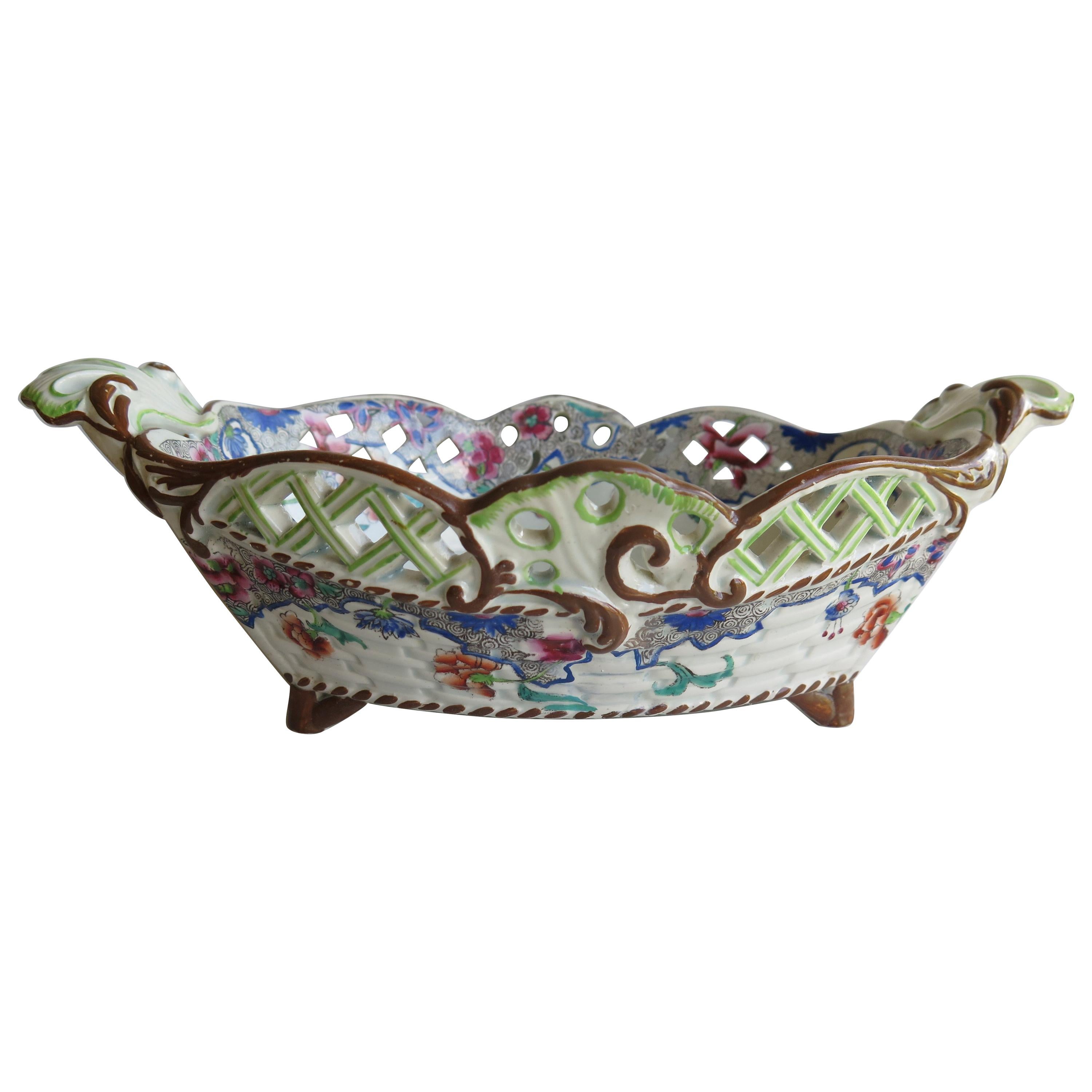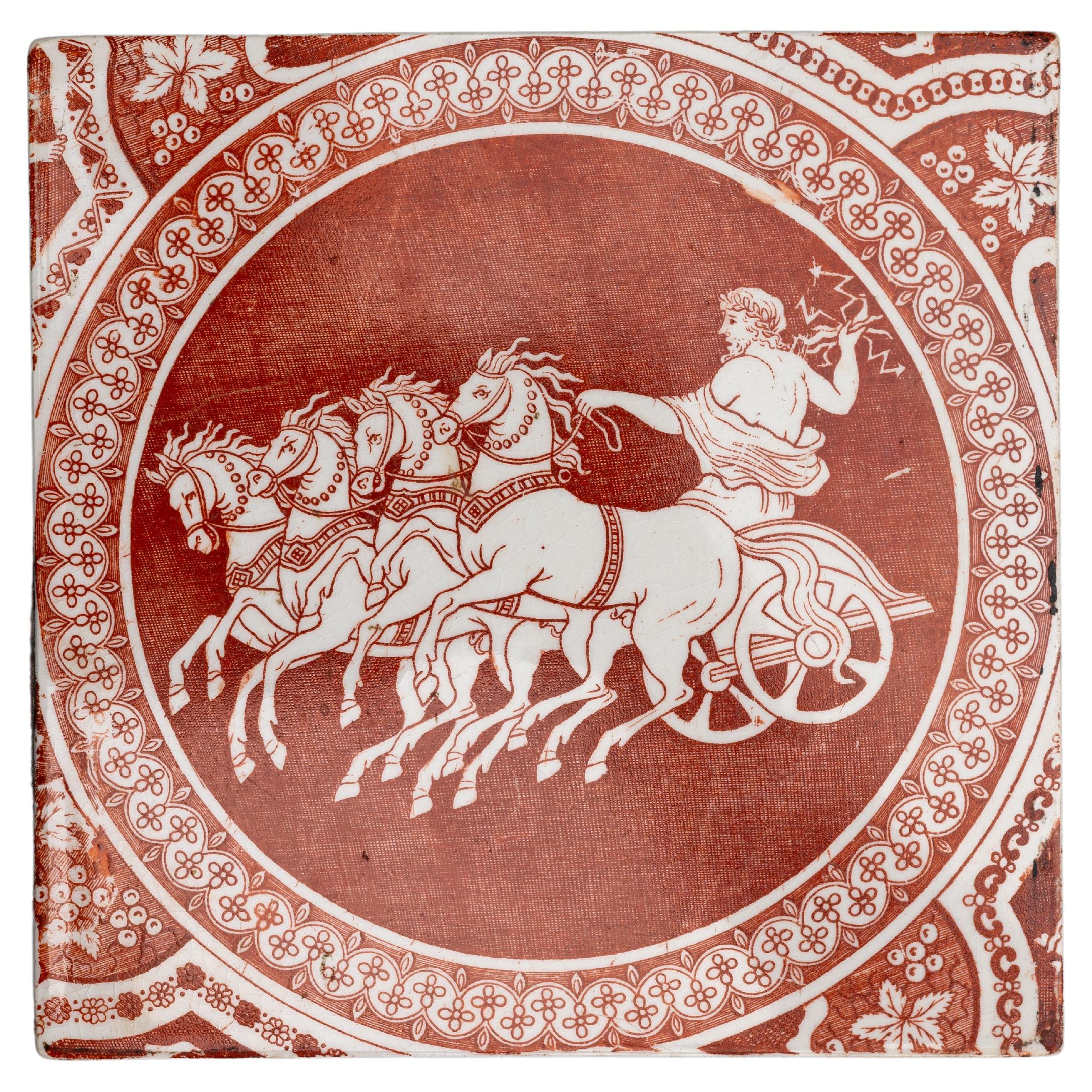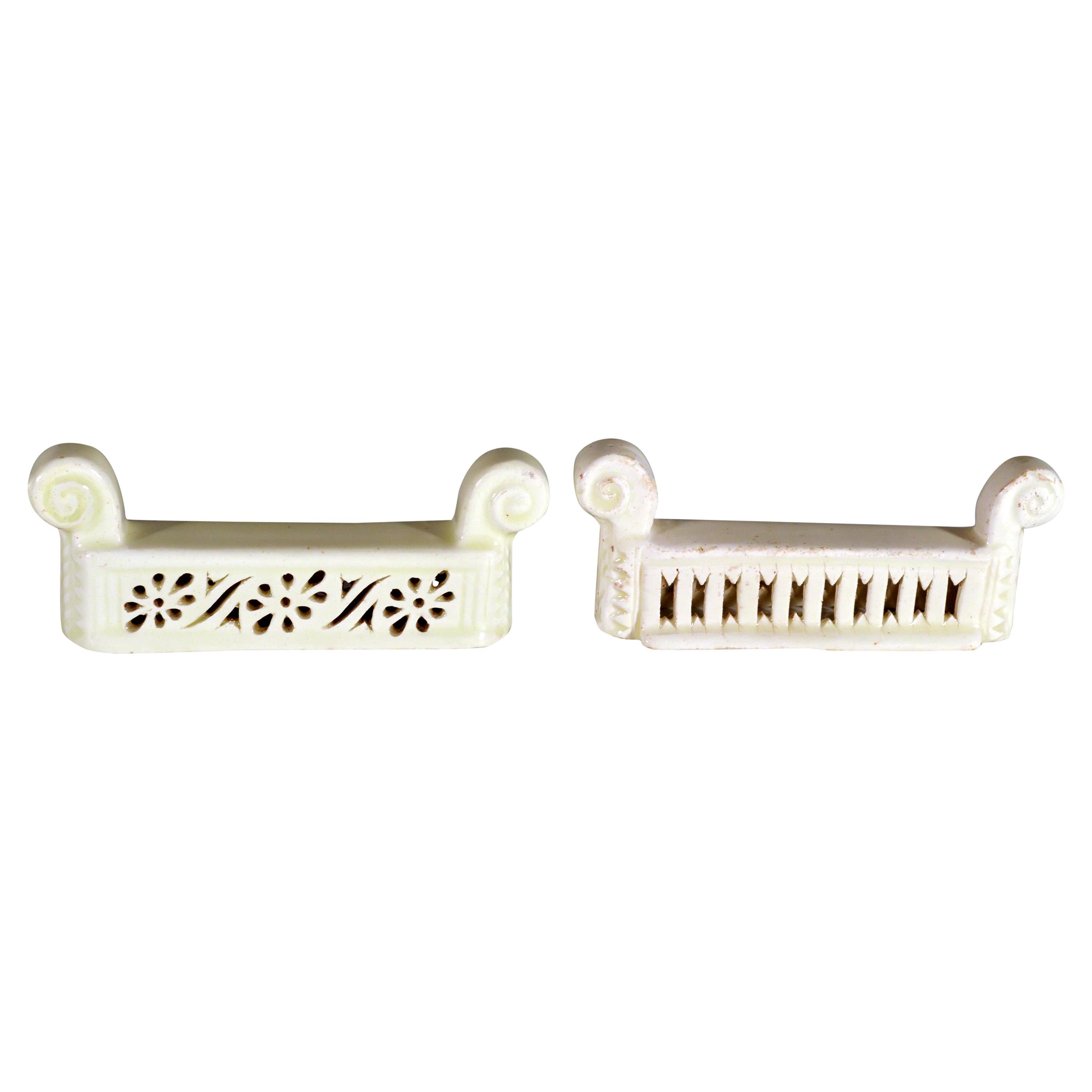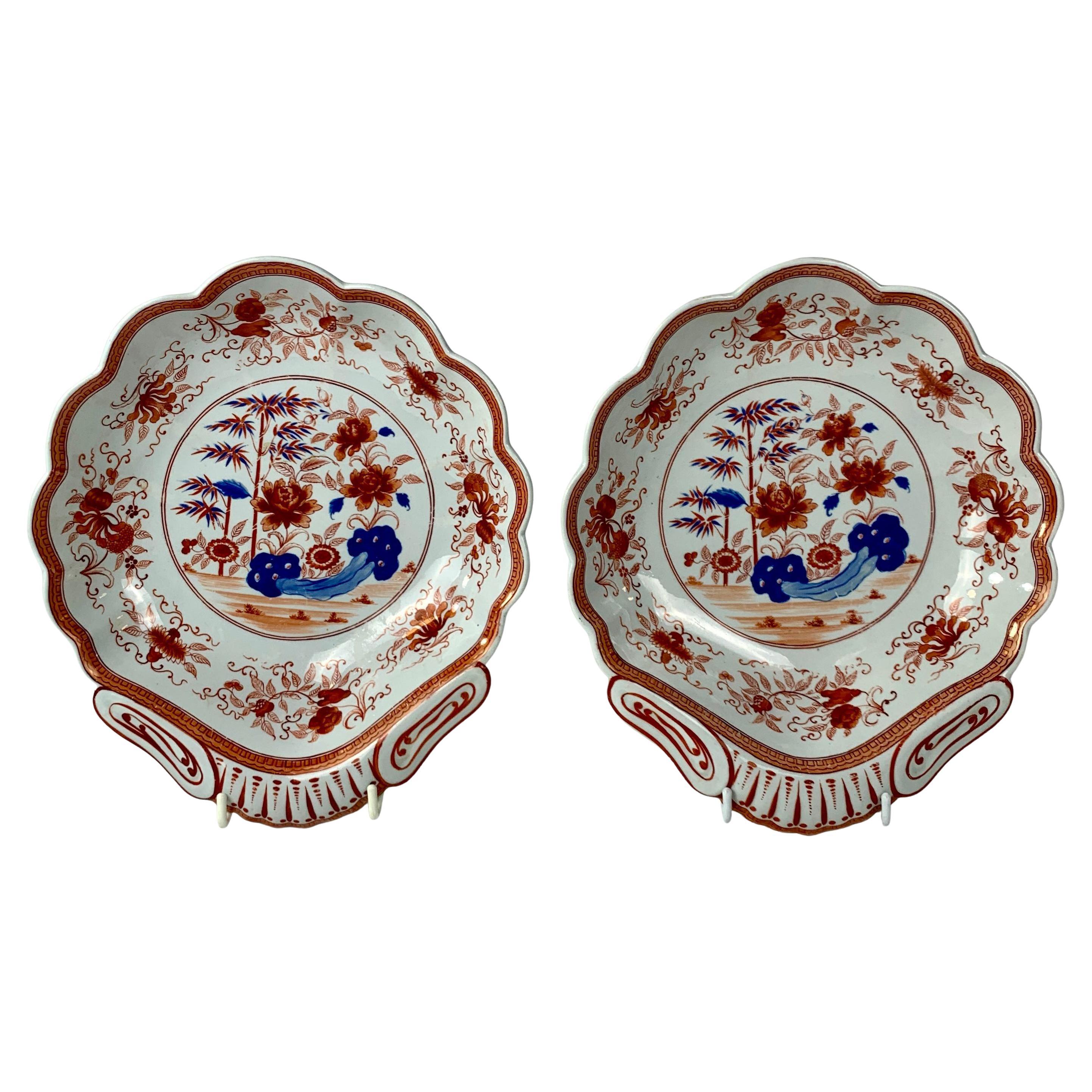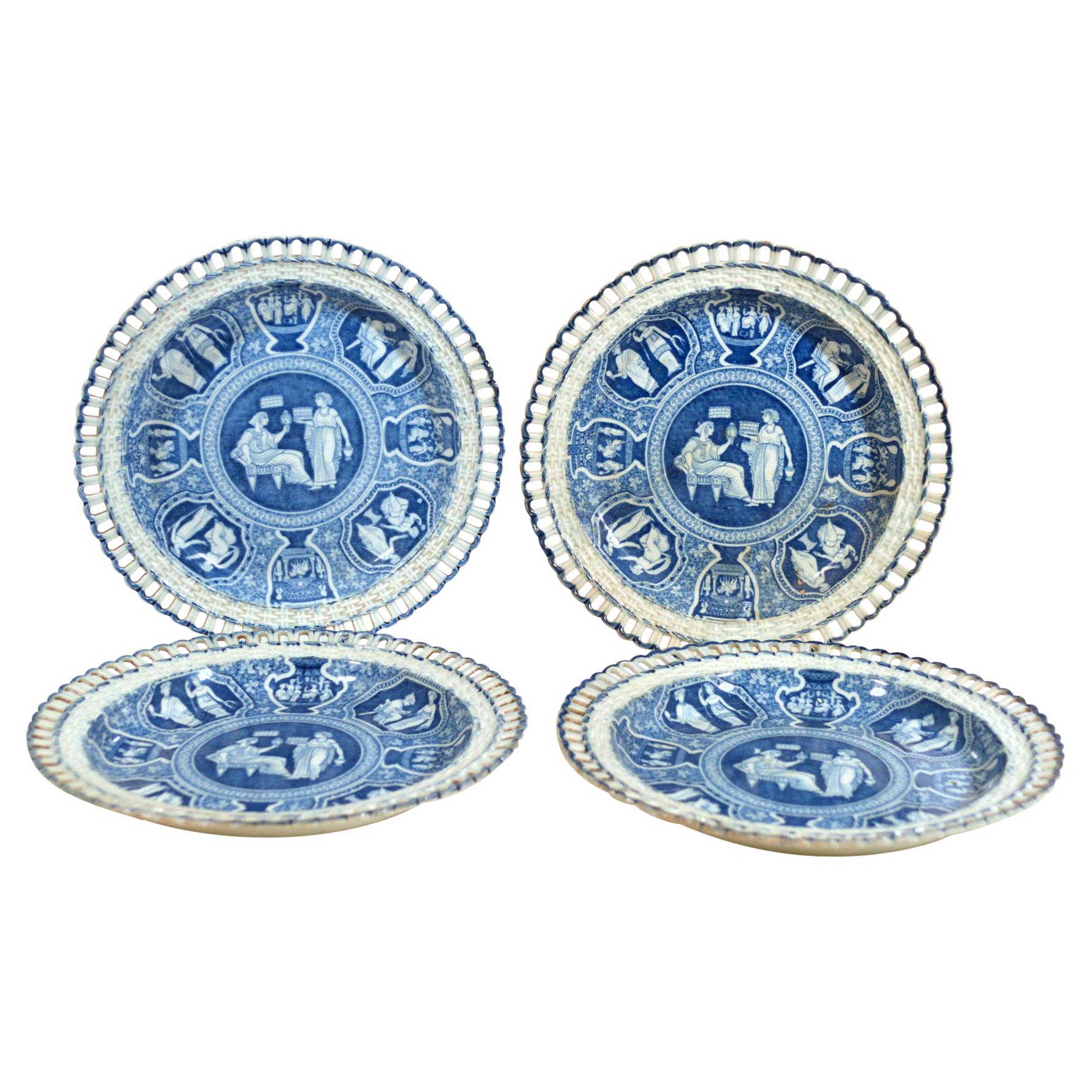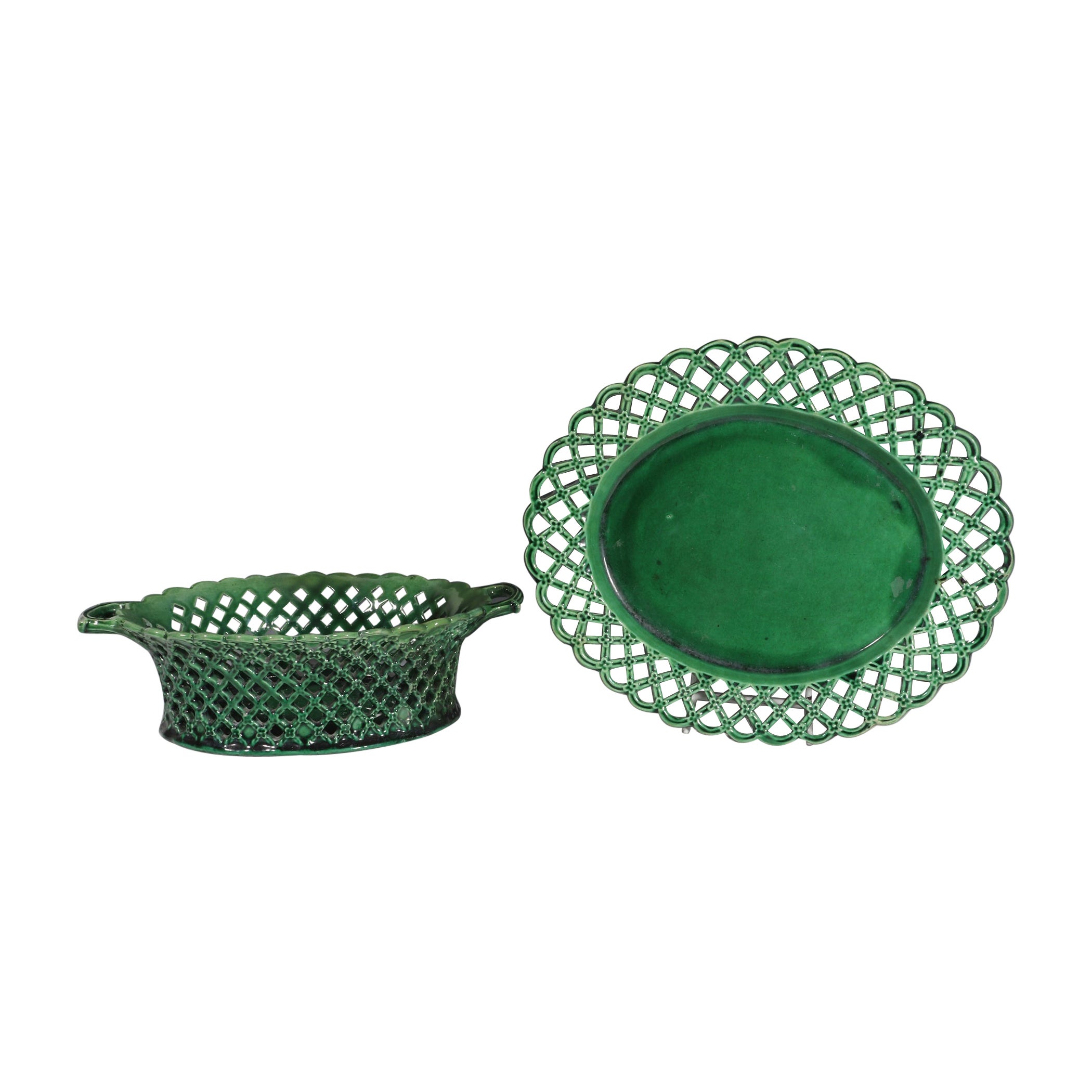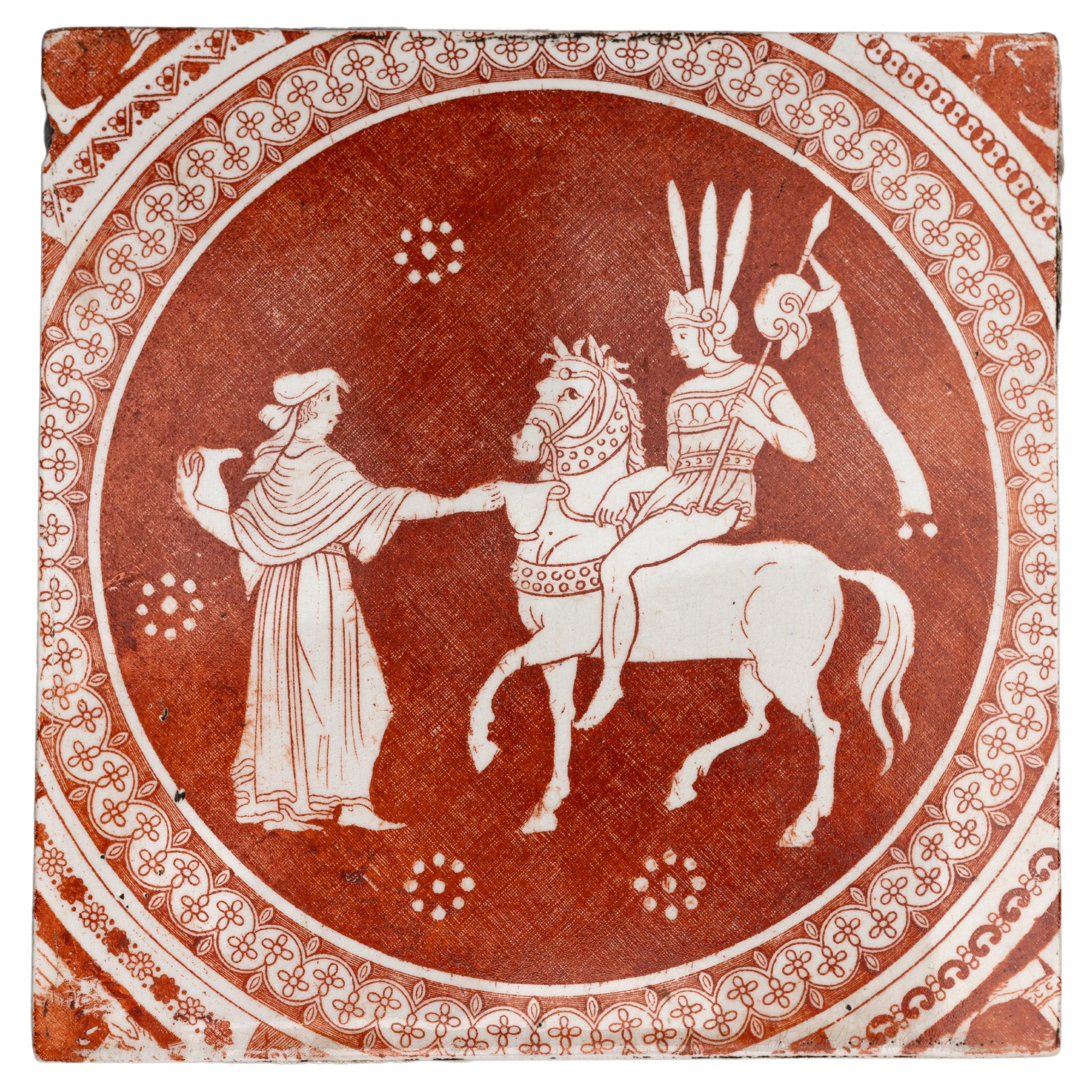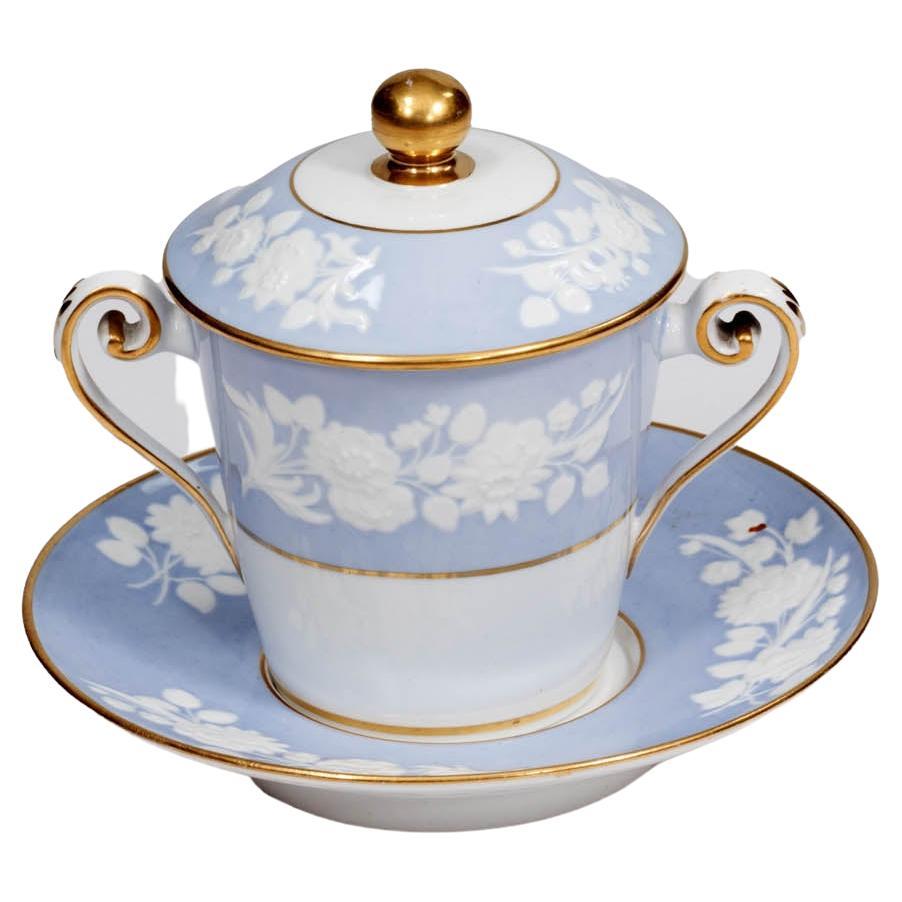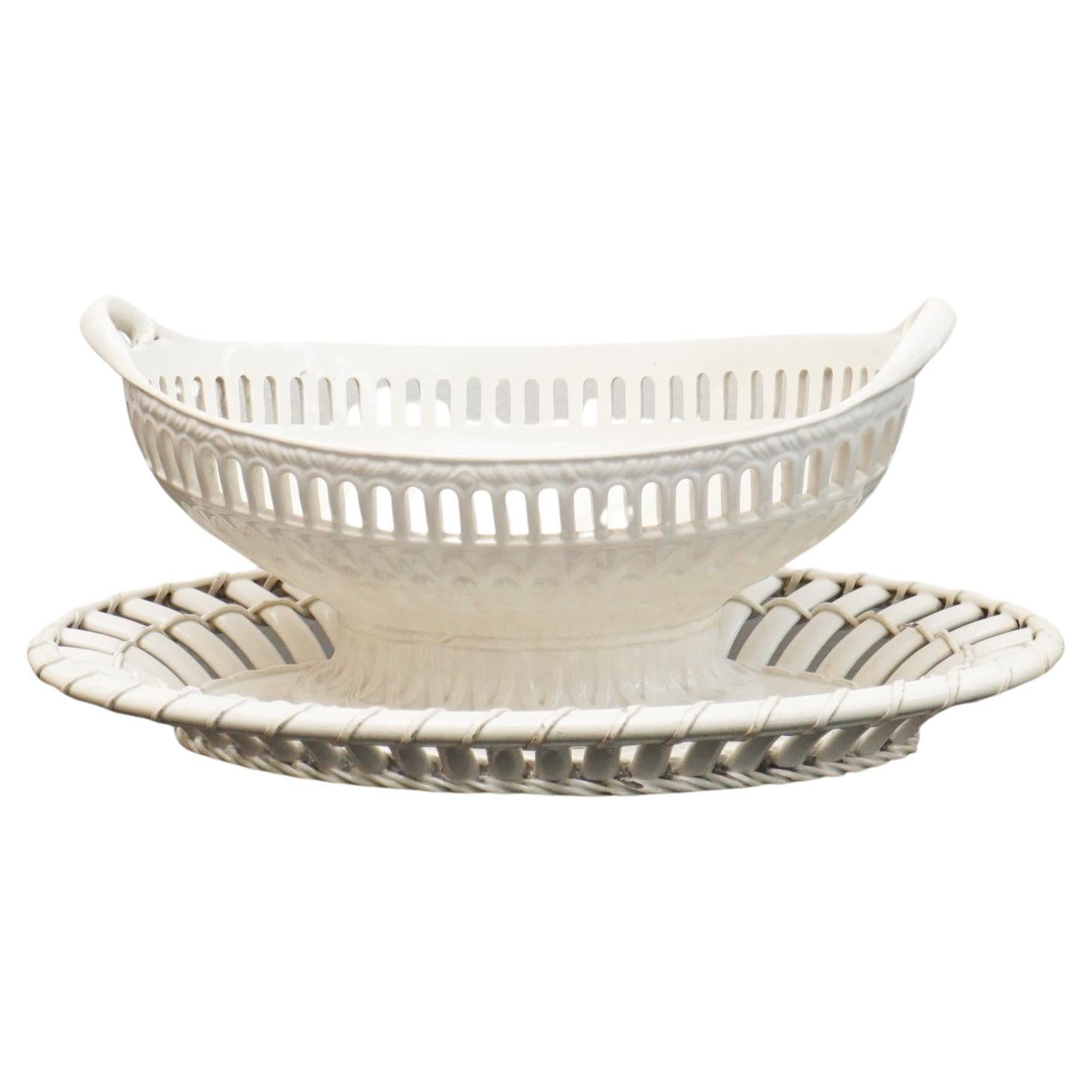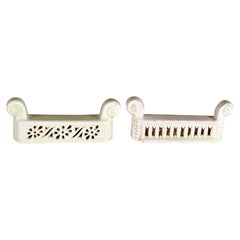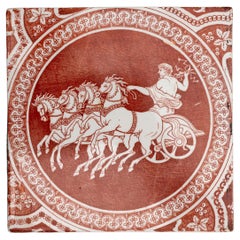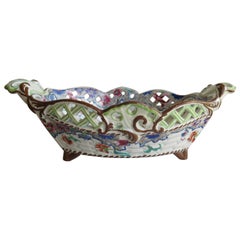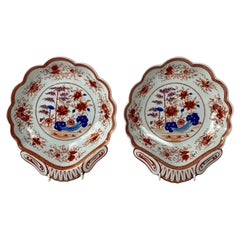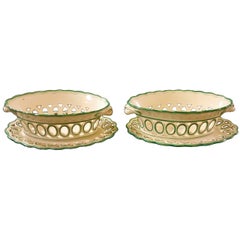
English Creamware Spode Openwork Fruit Baskets & Stands, Early 19th Century.
View Similar Items
English Creamware Spode Openwork Fruit Baskets & Stands, Early 19th Century.
About the Item
- Creator:Spode (Manufacturer)
- Dimensions:Height: 2.75 in (6.99 cm)Width: 9 in (22.86 cm)Depth: 6.5 in (16.51 cm)
- Sold As:Set of 2
- Style:Neoclassical (Of the Period)
- Materials and Techniques:
- Place of Origin:
- Period:
- Date of Manufacture:1810-20
- Condition:Minor structural damages.
- Seller Location:Downingtown, PA
- Reference Number:Seller: NY80381stDibs: LU86101550412
Spode
Spode is one of the oldest and most distinguished of the great pottery companies of Staffordshire, the time-honored home of English ceramics. The firm’s blue and white bone china transferware is a timeless classic. Spode dishes compose the sort of elegant dinner service that most of us envision on a traditional holiday table.
The company was established in 1770 in Stoke-on-Trent by Josiah Spode, a friend and neighbor of another estimable English ceramist, Josiah Wedgwood. The Wedgwood firm first came to prominence for its tableware, which quickly gained favor in aristocratic households throughout Britain and Europe.
Spode was particularly known for two technical achievements in the firm’s early decades. The first was to develop a standard formula for the making of bone china — a type of porcelain (made with a mixture of bone ash, minerals and clay) that is dazzlingly white and so strong it can be used to create very thin translucent plates and vessels.
The other advancement was to perfect the making of transferware. That process involves the transfer of pictorial images inked on tissue paper — such as the garden scenery in the famous Willow dish patterns — onto ceramics that are then sealed with a glaze.
From the 1820s onward, Spode enjoyed tremendous success both in Britain and elsewhere owing to the beauty and vitality of its decorative imagery. By some counts, Spode created more than 40,000 patterns in the 19th century.
In 1833, following the sudden death of Josiah Spode III, business partner W. T. Copeland took over the company and changed its name to Copeland Spode (it later changed again, this time to W. T. Copeland and Sons). Collectors regard Copeland-marked pieces as Spode china. The Spode brand was revived in 1970.
Many favorite Spode patterns — among them Blue Italian, Indian Tree, Greek and Woodland — date to the company’s early years. Spode’s most popular pattern, Christmas Tree, was introduced in 1938.
Prices for antique and vintage Spode china vary widely, based on the size of the service, its condition and the pattern. An antique dinner service for 12 people or more, in good repair and complete with cups and serving dishes, will generally cost between $10,000 and $20,000. Such Spode services become heirlooms — a proud and timeless addition to a family’s table. And as you will see on these pages, Spode’s rich and varied wares offer a visual feast in and of themselves.
Find Spode serveware, ceramics and decorative objects on 1stDibs.
- Early 19th Century Creamware Knife RestsLocated in Downingtown, PACreamware knife rests, Italian, Circa 1810-1820 The two rests are of similar form with a raised scroll terminal to each end. One with pierced stylized f...Category
Antique Early 19th Century Italian Georgian Pottery
MaterialsCreamware, Pottery
$990 / set - Spode Neo-Classical Greek Pattern Blue Openwork Dessert PlatesBy SpodeLocated in Downingtown, PASpode neo-classical Greek pattern blue openwork dessert plates, Ceres with a Priestess, Four plates (4) Early 19th century From a large collection of Greek pattern Spode- more pi...Category
Antique Early 19th Century English Neoclassical Pottery
MaterialsPearlware, Pottery
- English Pottery Green-Glazed Openwork Basket and StandLocated in Downingtown, PAEnglish pottery greenware openwork basket & stand, 1790-1880 The wonderful green-glazed openwork pottery basket and stand are decorated in the form of green-glazed openwork trell...Category
Antique Late 18th Century English Georgian Pottery
MaterialsPottery
- English Creamware Openwork Fruit Baskets and CoversBy Leeds PotteryLocated in Downingtown, PAEnglish Creamware Openwork Fruit Baskets and Covers, Leeds Pottery, 1930s The oval openwork plain creamware baskets and have a series of reeded openings to the central portion of th...Category
Early 20th Century English Georgian Decorative Baskets
MaterialsCreamware, Pottery
- Creamware Chinoiserie Teapot & Cover with Openwork GalleryLocated in Downingtown, PAEnglish creamware Chinoiserie teapot & cover with pierced galleried rim. Circa 1775. The circular English creamware teapot with two designs front ...Category
Antique 1770s Georgian Pottery
MaterialsCreamware, Pottery
- Creamware Openwork Dessert Plates, Set of SevenLocated in Downingtown, PASet of Seven Continental Creamware Openwork Dessert Plates The basketweave creamware plates have an openwork reeded border with a gilt rim. The basketweave becomes tighter as it r...Category
Antique Mid-19th Century Victorian Pottery
MaterialsCreamware, Pottery
- Early 19th Century Spode Red Greek Pattern TileBy Josiah Spode, SpodeLocated in Fort Lauderdale, FLA Neoclassical red transferware tile made by Spode 1806-1810, with the ‘Zeus in His Chariot’ pattern. Sir William Hamilton’s Collection of Etruscan, Greek and Roman antiquities, first published in 1766 by Pierre d’Hancarville, was a landmark publication in English design. It intended to disseminate the Antique style through its engravings of Attic pottery. The catalog’s faithful reproductions of Classical vases led British potteries, including Spode, to adapt or even copy the ancient art for modern life. These Spode Greek pattern tiles reflect the major influence of Hamilton’s catalog on English Neoclassicism. The central scene was taken directly from the catalog. This tile can be dated to a narrow window of production in the Spode factory, 1806-1810. During that time, Spode used a technique known as the “Pluck and Dust” method to print in red transfer designs onto creamware. Using this method, source prints were transferred overglaze using tissue imprinted with a very faint rendition of the design outlined in sticky oil. The decorator applied the tissue to the object then carefully “plucked” or pulled it away, leaving the sticky oil design behind. Then, a finely-ground enamel color was “dusted” onto the surface, sticking to any areas that had the oil. A final firing at a low temperature in the enamel kiln made the pattern permanent. The Pluck and Dust technique improved upon bat-printing and enabled larger designers to be transferred. It was short-lived, however, as under-glaze transfer printing soon took over as the preferred method for producing transferwares. Dimensions: 5 in. x 5 in. x 1/4 in. Condition: Excellent. Provenance: The Collection of Nancy and Andrew Ramage Jonathan Horne...Category
Antique Early 19th Century English Neoclassical Pottery
MaterialsEarthenware, Creamware
- Early Spode Creamware pottery Pierced Chestnut Basket, English circa 1825By Josiah SpodeLocated in Lincoln, LincolnshireThis is a rare Creamware pottery Chestnut Basket made by the SPODE factory, Stoke on Trent, Staffordshire, England, in the late Georgian, Regency period...Category
Antique Early 19th Century English Georgian Ceramics
MaterialsCreamware
- Pair Spode Shell-Shaped Dishes Orange and Blue Early 19th Century, Circa 1820By SpodeLocated in Katonah, NYSpode made this pair of fine quality shell-shaped dishes in England in the early 19th century, circa 1820. The dishes were printed in shades of orange and blue Orange and blue is t...Category
Antique Early 19th Century English Pottery
MaterialsIronstone
- 19th Century Sevrès Porcelain Figural Stand Centerpiece Raised Fruit BasketBy Manufacture Nationale de SèvresLocated in Miami, FLServing piece, fruit bowl center table with 1 plates and 1 high, basfuit basket in enameled porcelain. This highly decorative footed bowl, reti...Category
Antique Late 19th Century European Rococo Centerpieces
MaterialsPorcelain
- Early 19th Century Pearlware Chestnut BasketLocated in Pasadena, CAThis is a good example of a very early 19th century Pearlware Chestnut Basket in the "Blue Willow" transfer pattern. Creamware was invented during the second half of the 18th century and reached its height of popularity c.1810. Chestnut baskets were common serving pieces in 18th and 19th century households. Period antique Chestnut basket...Category
Antique Early 19th Century English Regency Ceramics
MaterialsClay
- Early Spode Red Greek Pattern TileBy Josiah Spode, SpodeLocated in Fort Lauderdale, FLA Neoclassical red transferware tile made by Spode 1806-1810, with the ‘Refreshments for Phliasian Horseman’ pattern. Sir William Hamilton’s Collection of Etruscan, Greek and Roman antiquities, first published in 1766 by Pierre d’Hancarville, was a landmark publication in English design. It intended to disseminate the Antique style through its engravings of Attic pottery. The catalog’s faithful reproductions of Classical vases led British potteries, including Spode, to adapt or even copy the ancient art for modern life. These Spode Greek pattern tiles reflect the major influence of Hamilton’s catalog on English Neoclassicism. The central scene was taken directly from the catalog. This tile can be dated to a narrow window of production in the Spode factory, 1806-1810. During that time, Spode used a technique known as the “Pluck and Dust” method to print in red transfer designs onto creamware. Using this method, source prints were transferred overglaze using tissue imprinted with a very faint rendition of the design outlined in sticky oil. The decorator applied the tissue to the object then carefully “plucked” or pulled it away, leaving the sticky oil design behind. Then, a finely-ground enamel color was “dusted” onto the surface, sticking to any areas that had the oil. A final firing at a low temperature in the enamel kiln made the pattern permanent. The Pluck and Dust technique improved upon bat-printing and enabled larger designers to be transferred. It was short-lived, however, as under-glaze transfer printing soon took over as the preferred method for producing transferwares. Dimensions: 5 in. x 5 in. x 1/4 in. Condition: Excellent. Slight chip to the upper left corner measuring approximately 0.9 cm. in length. Provenance: The Collection of Nancy and Andrew Ramage Jonathan Horne...Category
Antique Early 19th Century English Neoclassical Pottery
MaterialsEarthenware, Creamware
